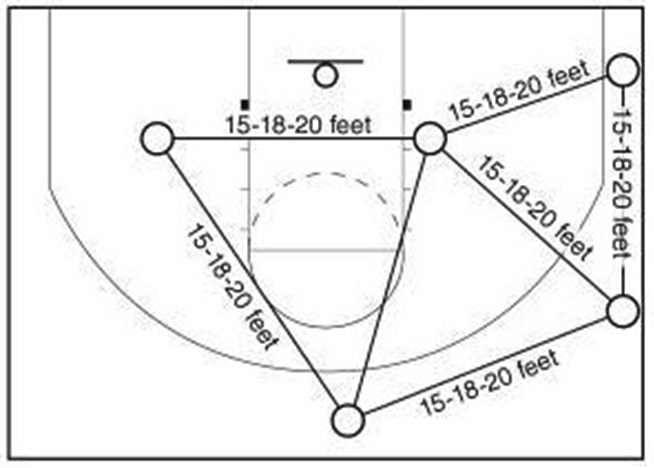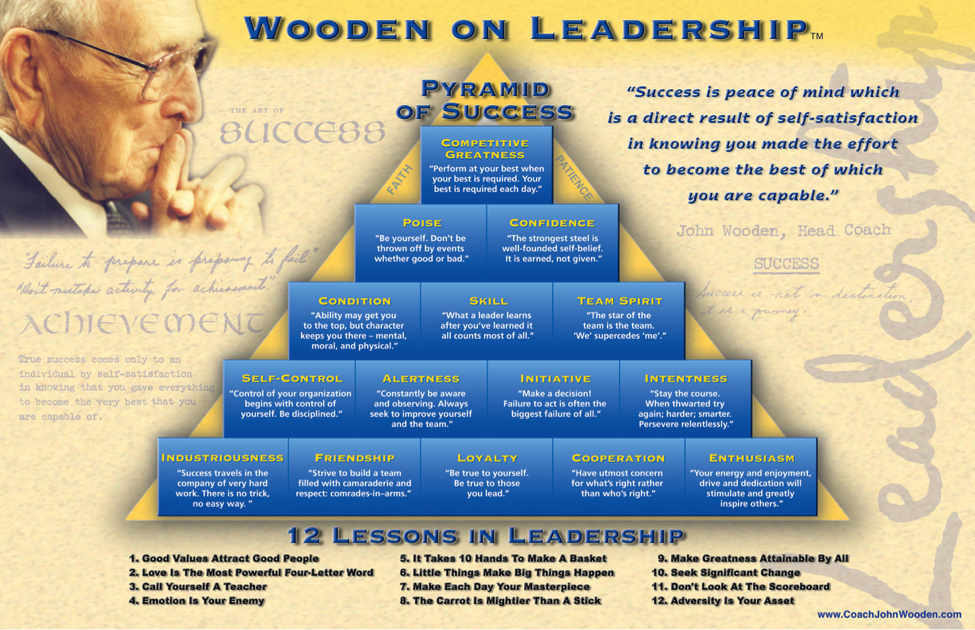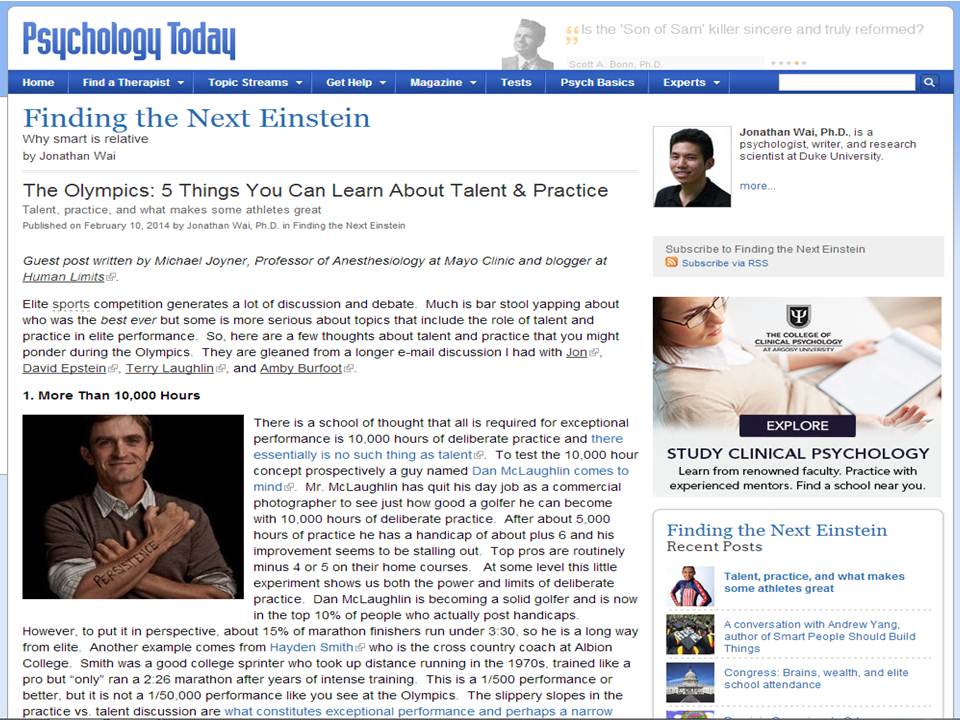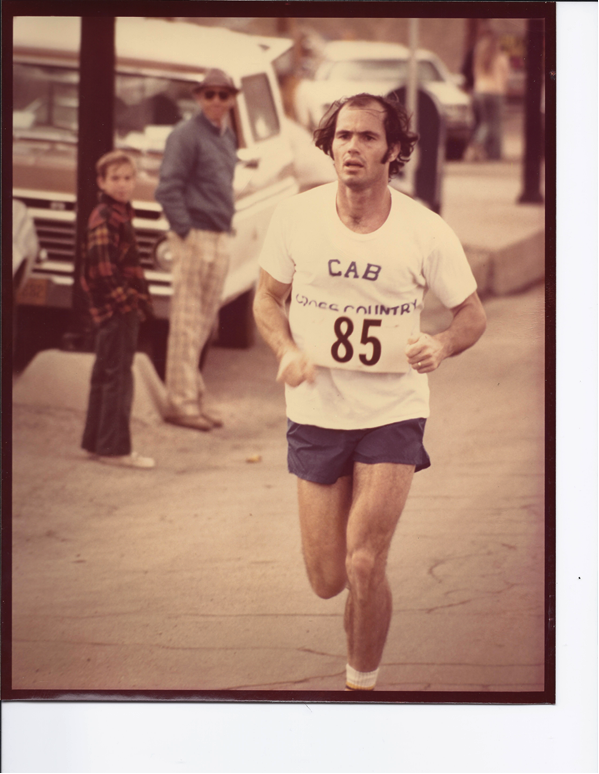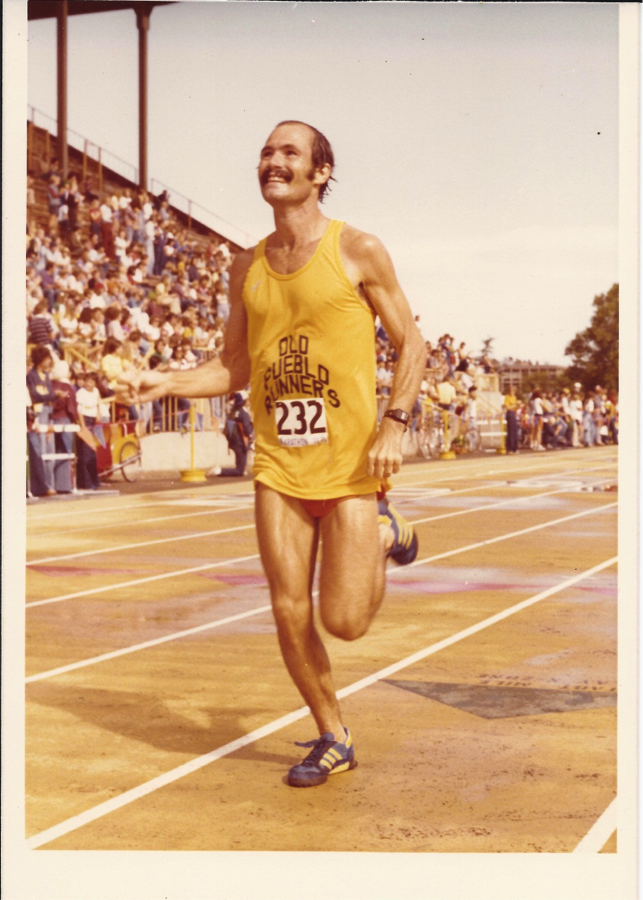Archive for the ‘Elite Sports Performance’ Category
Redefining Human Limits: Bernard Hopkins, Ashton Eaton, Michael Phelps, and Steve Way
There have been some remarkable performances recently showing just how well 40 somethings can do in elite athletic competition. Then there seem to be more and more startling performances in general. There is also the issue of Michael Phelps coming back for his fifth Olympics and trying to add more medals to his total. Finally, unknowns still come out of nowhere. All of this seems to be redefining the limits of what is possible.
Bernard Hopkins
Last weekend 49 year old Bernard Hopkins unified the light-heavyweight (175 lbs, 78Kg) boxing title and now holds all of the titles in the alphabet soup of boxing. Boxing is a crazy and some would say barbaric sport, but to fight 12 rounds you have to be in superb condition and the speed, coordination, timing, and footwork of great boxers are all outstanding. I keep a list of great performances by older athletes and there have been some dominant performances by people in their late 30s and early 40s, and a number of people have done well at the highest level of their sport into their late 40s. However, what Hopkins has done is incredible and I can’t think of anything that comes close.
Ashton Eaton
Speaking of anything that comes close, Olympic Decathlon champ and world record holder Ashton Eaton entered the 400m hurdles at the Mt. Sac Relays last weekend. He ran 50.01 and got fourth. This is a time that is at the edge of world class in arguably the toughest race in track and field. Incredibly, Eaton essentially ran the race without ever really practicing it. He is a superb high hurdler (13.35) and also excellent at the 400m (45.64), but to go out and blast a 50.01 is nuts. Milt Campbell was a world record holder in the high hurdles, a gold medalist in the decathlon (1956, he got a silver in 52), state champ swimmer, and professional football player. However, if Eaton becomes world class at the 400m hurdles, that will be truly out of this world.
Michael Phelps
Ashton Eaton may be “dabbling” in the 400m hurdles because he is “bored”, the other bored person appears to be Michael Phelps. Phelps is coming back in an effort to add to 20 plus medals. There was an analysis of “older swimmers” (Phelps will be 31 at the next Olympics) on the 538.com website. The analysis pointed out that it is unusual for swimmers to do well past their mid-20s, and that rest of the field is catching up to times that Phelps posted during his peak. All of this is true and would suggest that it will be hard for Phelps to medal again.
However, the era of large numbers of swimmers continuing into their late 20s and early 30s may just be starting. Swimming was relatively late to fully professionalize and it is only recently that the financial incentives have been there to keep many people going past 25 or 26. The other issue is that swimmers start to train very hard in their early teens and most are tired of the grind after 10 plus years. Phelps seems to be settling into a pattern of 18 easy months post Olympics followed by a build up for the next Olympics. He also does not have to swim 6 or 8 races in 2016 and could easily focus on a couple of events. So, don’t count him out.
Steve Way & Talent Identification
Steve Way was an overweight (224lb, 101kg) smoker who started running in 2007. A couple of weeks ago he ran 2:16 at the London Marathon and he is also a leading ultra-marathoner in Europe. Way is 39 years old. I have done a number of posts on talent identification, and the wasted talent that is out there in many countries. If all of the Steve Ways of the world were found and could be motivated to train as youngsters, would the East Africans be so dominant?
Closing Thoughts
The examples above all highlight things I have posted on in the last couple of years. However, the examples of Hopkins and Way are perhaps the most extreme examples related to aging and talent identification I have ever seen. Eaton and Phelps are just plain other worldly and perhaps their efforts show what a bit of boredom can do in the right hands.
Triangulating Phil Jackson
The news that the basketball coach Phil Jackson is taking over the NY Knicks has focused on Phil-as-Zen-Master and what he can do for a dysfunctional organization that seems devoted to mediocrity. Part of this discussion includes some contrived controversy about the Triangle Offense, a scheme that he used with great success while coaching the Chicago Bulls and Los Angeles Lakers to 11 NBA championships. Will Phil hire a coach who runs “the Triangle” and if so, will it work without Michael Jordan of Kobe Bryant?
The Triangle Evolves
My high school team ran the Triangle (known as the Triple Post then) and over four years we won >90% of our games and went to state year after year. I can still diagram the basic Triangle set and various options that flow from it. The “inventor” of the Triangle, Tex Winter has called it a “junior high offense” and freely admitted that his ideas about evolved from the scheme he ran under Coach Sam Barry at USC. Below is a diagram of what the offense looks like after the first option.
What the Triangle Does
The triangle does a number of things:
- It gets everyone involved.
- It emphasizes spacing and facilitates passing.
- It sets up a series of simple 3 on 3 and 2 on 2 sub-plays that eventually let the offense find a mismatch that leads to a good shot.
- It is a framework and is not rigid; each player has reads and options.
- It has continuity and there is always a way out and another option.
If you take these five good things about the Triangle and try to apply them in a general context it looks like a pretty good way to manage or lead most things in life……get everyone involved…..facilitate teamwork……look for and leverage small advantages……have a system but be flexible…..don’t get in situations where there is no good option.
Only Works for Phil?
One criticism of the Triangle is that it has “only worked” for Phil Jackson who had great players. While that might be true over the last 20 or so years, the Phoenix Suns led by Winter disciple Cotton Fitzsimmons ran the Triangle in the early 70s and generally over performed with an expansion team. The other thing that people forget is that in an earlier generation both Alex Hannum and Bill Sharman (who played with for Barry at USC) used elements of the Triangle. Sharman, who recently died, is one of the greatest athletes and pure shooters to ever play in the NBA, he was a superb coach and is one of only three people in the basketball hall of fame as a player and coach.
Steve Kerr’s Final Word
Steve Kerr who was on five championship teams with the Bulls and later the San Antonio Spurs mastered the Triangle as a player. He had the following comments about the Triangle:
“You can’t afford to have the ball in one person’s hands. In a way, that is sort of the genius of the offense and the reason it makes it so difficult for a lot of modern-day players to adapt…….It’s alarming that so many coaches have tried and not had success, I’ve had this debate with myself since I’ve thought about coaching at some point in my life, and if I were to do so at the NBA level, I’m not sure I would implement the triangle. I believe in spacing and ball movement and angles and backdoor cuts and using the defense’s pressure against itself. Those are all things the triangle does. But it’s a little tricky because it does take time for the players to adapt and really feel confident with it, and one thing NBA coaches don’t have is time. If they mess around trying to run the triangle for a year or two and they don’t have success, then that’s it.”
If no one runs the Triangle it is not exactly a threat to Western Civilization, but maybe the fact that no one is running it highlights a world where short term thinking “wins” all too often.
Does Exceptional Talent Run in Families?
Last week I explored why it is easy to conclude that talent might be highly heritable but hard to get an easy DNA based read on the genetics of talent. In this post I want to share some thoughts about how exceptional levels of achievement and success seem to run in families and ultimately why this might increase through a process known as “assortative mating” or the tendency of people with certain characteristics to reproduce with each other and perhaps amplify the characteristic of interest over time. Think tall people marrying tall people and having tall kids for example. This concept also applies to things like income, intelligence, and unfortunately obesity.
This post also reflects an e-mail discussion with the usual suspects: David Epstein, Jonathan Wai, Amby Burfoot, and Terry Laughlin.
Darwin’s Family
During some recent academic work on heritability and genetics I stumbled onto the fact that Darwin’s extended family has been loaded with achievers and innovators for about 250 years. Other families of note include the Huxley family and also the Bohr family from Denmark whose members have made major contributions to physiology and math with two Nobel prizes in physics.
Sports Dynasties
When dynastic families in sports came up, through dumb luck David Epstein was looking through the files he generated on this topic for his book “The Sports Gene”. Here is David’s stream of consciousness list of exceptional families and a few side comments:
“In the course of book reporting, I came across a lot of families with multiple pro athletes, although not always in the same sports. For example, Jon Jones is the greatest MMA fighter in the world, and his two brothers are NFL players. Then there were rare families like the Alou clan, which had like six straight men in MLB. At one point, three Alou brothers were the outfield for the San Francisco Giants. The Alomars had father and two sons in MLB, and the Bells had four guys in three different generations who all at one point played for the same team! The Boones, Hairstons, and Colemans are three generation MLB family. Clay Matthews’ family is a three generation NFL family. I remember a father and son from the Maldini family in Italy were captains of Champions League winners exactly 20 years apart. I guess there are a few really high profile ones, like the Mannings, the Harbaughs and Ryans, the Sharpes. The Gronkowskis have three currently in the NFL. Cecil and Prince Fielder. In the NBA the Gasols, Brooke and Robin Lopez, the Currys. Kobe and his father (Joe Bryant). Barry Bonds and his father. Rick Barry and his three sons were all in the NBA. I think the Staals have four brothers in the NHL. Eight members of the Sutters have six Stanley Cups between them, and I think the three Howes have some. And I only know the Sauers have two brothers in the NHL and one was in the NFL because I was writing about the brain damage of the NFL brother. There are some prominent identical twin athletes, like Tiki and Ronde Barber, and in track the female Barbers, and the Borlees. The Klitschkos, both world boxing champs at the same time. The identical Bryan bros are the top doubles tennis team in the world. The Griffeys, the three Dimaggios, the three Ripkens. Jackie Robinson’s brother took silver in the 200 in 1936 just behind Jesse Owens. The Alis and Reggie and Cheryl Miller both have a male and female who were both the best or nearly the best in the world. The five Andrettis in auto racing. The Williams sisters of course. …there are a bunch more. I didn’t memorize this, I was just pulling some from a folder where I had been marking these down. Actually, my favorite was an Israeli mother and daughter who were on THE SAME 4×100-meter relay for the national team. How cool is that?”
Basketball Fathers and Sons
David also sent me some back of the envelope calculations made by his colleague Jon Werthheim (Scorecasting) about the odds of the son of an NBA player making it to Division 1 college basketball:
“We can argue about the ratio of nature to nurture. But, clearly, sons born to fathers who once played in the NBA are statistically more likely to become D-I hoops players. How much more likely? After joining forces with Dr. Ed Feng—Stanford Ph.d in engineering and founder of Powerrank.com —crunching the numbers, and making some admittedly imprecise assumptions, we reached an astounding conclusion: male offspring of former NBA players are currently more than 55 times likelier to earn a college basketball scholarship than a male from the population at large. Here’s how we arrived there:
• There are (roughly) three million high school graduates each year.
• There is (roughly) a 1:1 male-to-female ratio for 15-64 year olds.
• So there are 1.5 million male high school graduates each year
• Division-I college basketball teams have up to 13 scholarships
• There are 347 Division-I schools that have a men’s basketball program.
• Overestimating that each program uses its full complement of scholarships, there are 4511 scholarships at any given time, 347 * 13 = 4511.
• We divide the 4,511 scholarships by the 1,500,000 males times four years of college. i.e. 4511 / (4 * 1,500,000) = 0.00075.
• In the population at large, a male’s odds of earning a D-I basketball scholarship are .00075 or 1 in 1330.
On the other hand:
• There have been 4,699 players in NBA history. (This, however, dates to the 40s and includes current rookies.)
• We make a rough estimate that one-tenth of them had a male offspring born between 1990-1994 — the window for kids in college today.
• So 470 former NBA players had a son born between 1990-94.
• There are (at minimum, as some parentage might be unascertained) 20 current D-I players whose fathers played in the NBA.
• 20/470 = 4.3 percent.
• Among the population of current 18-22 year-old old males born to NBA players, their odds of earing a college scholarship are roughly 1 in 23.5.
• Put another way, they are more than 55 times more likely to play D-I basketball than kids whose father weren’t in the NBA.
When Elites Meet and Mate
Before there were a lot of high level athletic opportunities for women it might have been unusual for elite male and female athletes to meet and mate. However, with the advent of more competitive opportunities for women perhaps there will be more and more pairings of elites and whatever elements of athletic success are heritable might converge in their kids. Amby Burfoot pointed this out back in 2008 for the runner and 10k bronze medalist Shalane Flanagan who both “Picked Her Parents Well” and “Trains Her Butt Off”:
“I’ve been writing a bit in recent days about possible genetic contributions to distance-running success. You know: “Pick your parents carefully, and ask them to grow up in the Rift Valley of East Africa.” Flanagan didn’t follow the script precisely, but she sure as hell did a fine job selecting her parents. Her mother, Cheryl Treworgy, was the first woman to break 2:50 in the marathon. The first. Ever. Her father, Steve Flanagan, was a 1:50.8 half-miler, a 4:07 miler, a three-time member of the U.S. World Cross Country team, and a 2:18 marathoner.”
Another example is the cyclist Taylor Phinney, his father was a professional cyclist and his Mom (Connie Carpenter-Phinney) was both a summer and winter Olympian in cycling (gold medalist 1984) and speed skating. Height obviously matters in basketball and my wife has two former teammates who are both about 6-4 (195cm). Both of these women have married tall (6-6 and 6-8) men who played college sports and their kids are literally off the charts in terms of height. It will be interesting to see where their interests lie and how far they go in sports.
Nature, Nurture, Push, Pull?
In a whole series of posts on the topic of talent vs. practice I have favored the idea that talent is hard to define but essential for elite (as opposed to expert) level performance. I have also argued that talent is nothing without practice. The examples above also make me think about the role of enriched environments. If you listen to the parents of elite performers in various fields many will tell you that they did not “push their kids” and that the kid pulled them. However, if you look further you might also find evidence of what I call an enriched environment with plenty of opportunities for exploration and good early instruction. Also what role does seeing a parent or parents early in life training or pursuing some other activity they really enjoy (that is also valued by the world at large) have on the ultimate motivation of a child? Late in life Andrew Huxley, who won the Nobel Prize for figuring out nerves work with his colleague Hodgkin, was interviewed and commented about his very early education and home environment:
“Well, I had always been keen on and quite good at hand work of various sorts, played a lot with meccano and zero-gauge clockwork railways when small. My parents gave my brother and me a quite good lathe when I was about twelve or so, which I still have (he was 79 at the time of this interview). It’s a screw-cutting, metal-turning lathe, which I still use for building my own equipment and I was self-taught on that…”
Huxley did design and build much of the equipment he needed for his ground breaking scientific work. If you read the whole interview it is pretty clear that he pulled and his parents facilitated while he was exposed to the best educational institutions and minds available in England throughout his life.
Lessons for Parenting?
One thing that hits me as I review these family histories of achievement is that pushing your kids and so-called “Tiger Parenting” is not such a good idea. Maybe a better strategy is to set a good example by engaging the world in a positive but rigorous way and facilitating and supporting your kid’s interests. From what I can tell that pattern is common in many of the families mentioned above.
Pyramid of Success
Wooden: A Coach’s Life
Today’s post is a reflection on John Wooden’s “Pyramid of Success” shown below. Many versions of it are available on the web; the one below is my favorite. It also includes 12 of the many sayings Wooden used to motivate his players and teach life lessons to essentially anyone who was interested.
The motivation for this reflection was reading “Wooden: A Coach’s Life” by the noted basketball writer Seth Davis. This is a terrific and even scholarly biography with incredible footnotes and original interviews and insights about the great coach. I rank this book as one of the top four sports biographies I have ever read, and I have read 100s over the last 45 years starting at about age 10. It is just as good as “When Pride Still Mattered” about Vince Lombardi by David Maraniss and also biographies about Casey Stengel and Babe Ruth by Robert Creamer. All four books do a great job of telling the stories of these men. They all take a deeper dive into how their sporting achievements and personal narratives reflected the bigger picture of what was going on in America and even the world as lived out incredible lives.
Wooden lived to be almost 100 and his life spanned the end of traditional rural non-mechanized America beginning before World War 1 all the way to the present. He was the first man in the Basketball Hall of Fame as both a player and coach. His teams won 10 of 12 NCAA titles in the 1960 and early 1970s. He won with small teams, medium sized teams, underdogs and with supremely talented players like Kareem Abdul Jabbar and Bill Walton. But he did not really win big until he was in his early 50s and had been coaching for 30 years. During his nearly 35 year retirement he then went on to be a sort of cultural Yoda (using the pyramid) to teach the world his ideas about achievement and success.
A “Coach’s Life” does a great job recounting the deeply religious and upright St. John version of John Wooden that is typically promulgated by Wooden’s many admirers. It also shows that John Wooden was not perfect (he never claimed to be), had a number of faults and turned a blind eye to things players and boosters did over the years. Which brings me to the Pyramid of Success. Wooden developed the Pyramid as a high school teacher and coach during the 1930s in Indiana. He claimed he used it to help students, parents and players understand the value of doing their best vs. becoming focused on some arbitrary definition of success like grades and “winning or losing”.
However, as I read the book I wondered if the Pyramid was more about Wooden reminding himself that he needed to constantly harness his tremendous competitive energy, drive and skill to become a better coach and “teacher”, his preferred description of what he did. During the 1920s and 1930s Wooden was a fiercely competitive player and coach who sometimes let his emotions get the best of him. He was a superb pool hustler and golfer. He was a noted bench jockey of opposing players and officials. Bill Walton has called Wooden one of the two greatest trash-talkers he ever saw (the other was Larry Bird). Wooden could also routinely beat his all-American players at free throw shooting contests in his late 50s and early 60s. At some level Wooden was an ultimate alpha-male who did not become a great coach until he mastered his emotions and channeled his energy. For example, he shortened practice in the early 60s and became even more obsessed with simplifying what he taught is players vs. extending practice to “do more”. If you look at the Pyramid of Success in the context of John Wooden talking to himself, it is a road map of how he mastered his emotions, focused his energy and got better over time.
One of Wooden’s favorite sayings goes something like “control yourself so others don’t have to”, and in the final analysis maybe that is what the Pyramid of Success is all about.
Beyond Balance: The Protopopovs
During the 2012 Summer Olympics I did a number of posts on all-time greats like the sprinter Bob Hayes and perhaps the most underrated distance runner in history Bob Schul. Both won gold medals in the 1964 games at Tokyo.
One of the points I have made with both men is that when you make a few adjustments for equipment, their performances are probably as good as the best performances are today. The same can be said of the miler Jim Ryun and of course Secretariat is perhaps the greatest and most dominant “athlete” ever. One shining example from the Winter Olympics is the incomparable Russian figure skating pair, the Protopopovs who dominated pairs skating in the 1960s with golds in 1964 and 1968.
The video clip below shows their winning performance in 1968 at Grenoble, France. It is a long clip but note their incredible balance, tempo, synchrony, and timing. The lines of their skating are absolutely beautiful. You will see more impressive throws and acrobatic maneuvers in the 2014 skating events, but you will not see a more beautiful performance. Enjoy watching the Protopopovs!
Guest Post: Psychology Today
click for article
Hayden Smith Before & After
Here are a couple of vintage pictures of Hayden Smith who I mentioned earlier in the week. These shots give you some idea about how his body changed as he made the ten pound transition from a speed/strength/power “fast-twitch” athlete in the middle 1970s to a 2:26 marathoner by the late 1970s. His comments about the pictures are instructive.
Tucson Marathon 1975
“After the race I coached at the regional wrestling tournament for 8 hours. Now I need a nap after a 5 miler.”
Eugene Marathon 1979
“Little did I know Stoney (Dennis Stonehocker) had just missed qualifying (for the Olympic Trials) that day. Blair (Johnson) was 2:16 or 2:17, Tom (Rotkis) was 2:23. I spent the final 100 looking at the clock ticking in the 2:20’s. Finally under 2:30:00! I didn’t bother to kick (like the day we raced to the finish in the parking lot in Tucson).”
Denis Stonehocker and Tom Rotkis were part of our group of “sub-elite” marathoners in Tucson from that era.
10,000 hours: The Saga of Hayden Smith
I want to do a final post on the idea that 10,000 hours of deliberate practice can make anyone world class at anything. This follows the recent posts on the general topic of talent and some of the nuances or even urban legends about the so-called 10,000 hour rule. To do this I want to tell you the story of Hayden Smith who is the cross country coach at Albion College.
Hayden Smith 1.0
The first version of Hayden happened in the late 1960s when he competed for Albion. He was a 5’8”, 145 pound sprinter/jumper who could run the 100 yard dash in 10.2, long jump 23 feet and high jump 6’5”. In an e-mail he told me his best time for the 220 yard dash was:
“23.1……always faded because it was too far!”
Hayden graduated from Albion in 1970.
Hayden Smith 2.0
The second version of Hayden emerged in the early 1970s when he began to teach and coach at Flowing Wells High School in Tucson, Arizona. For some reason he decided to start running long distances. In 1974 Hayden ran his first marathon. Here is the progression of his personal bests along with some notes about his body weight over that time.
Date PR Weight (lbs) Site
12-01-74 3:14:30 142 Culver City
02-15-75 3:01:54 142 Tucson
06-14-75 2:56:13 140 Palos Verdes
12-20-75 2:49:43 138 Fiesta Bowl
06-20-76 2:47:05 138 Toledo
12-11-76 2:40:26 138 Fiesta Bowl
12-10-77 2:38:20 136 Fiesta Bowl
02-18-78 2:32:30 135 Tucson
12-02-78 2:31:44 135 Fiesta Bowl
04-16-79 2:30:37 135 Boston
09-09-79 2:26:28 133 Eugene
12-01-79 2:26:10 134 Fiesta Bowl
While Hayden was getting better and better over the years he was part of an informal group of about 10 people in Tucson who all had personal bests for the marathon under 2:30. The group lasted until the early 1980s when people either started running less, moved away or got into other sports. From time to time true elites with times near 2:10 like Ed Mendoza, Thom Hunt and Don Janicki would train with us. More frequently Blair Johnson and Nick Martin, who both had personal bests of around 2:15, ran with us.
Most members of the group had a history in endurance sports and broke 3 hours the first time they ran a marathon, frequently off minimal training. They then got better quickly and in a year or two were running near 2:30 or faster. By contrast Hayden showed a slower start and a five year progression to a sub 2:30 time. During those years he was averaging between 80-100 miles per week of running or more, doing hard core interval training, and long runs in the mountain trails around Tucson on Sundays. In other words Hayden was training the way elite runners were at the time and still do! He was also regularly running shorter road races. Hayden continued to train at this level through most of the 1980s and ultimately he broke 3 hours 55 times. However, his personal best is from 1979.
If there is anyone in the world who has spent 10,000 hours of deliberate practice at anything it is Hayden Smith.
Hayden vs. 10,000 hours?
Hayden is a great example of both the power and limitations of the 10,000 hour concept. First, he became a truly accomplished distance runner in spite of the fact that he started out in what might be called “fast twitch” sports where he was also way above average but not great. So, Hayden got good at distance running even though it was probably not exactly where his “natural talent” lied. Second, no matter how much he trained his upper limit was still a long way away from world class. That was true for all of the other members in the group as well. Everyone found a talent barrier somewhere in the 2:20 to 2:30 range no matter how hard any of us trained.
So, when anyone tells you that talent doesn’t matter don’t believe them. And, when anyone tells you the practice doesn’t matter don’t believe them.
You are currently browsing the archives for the Elite Sports Performance category.


